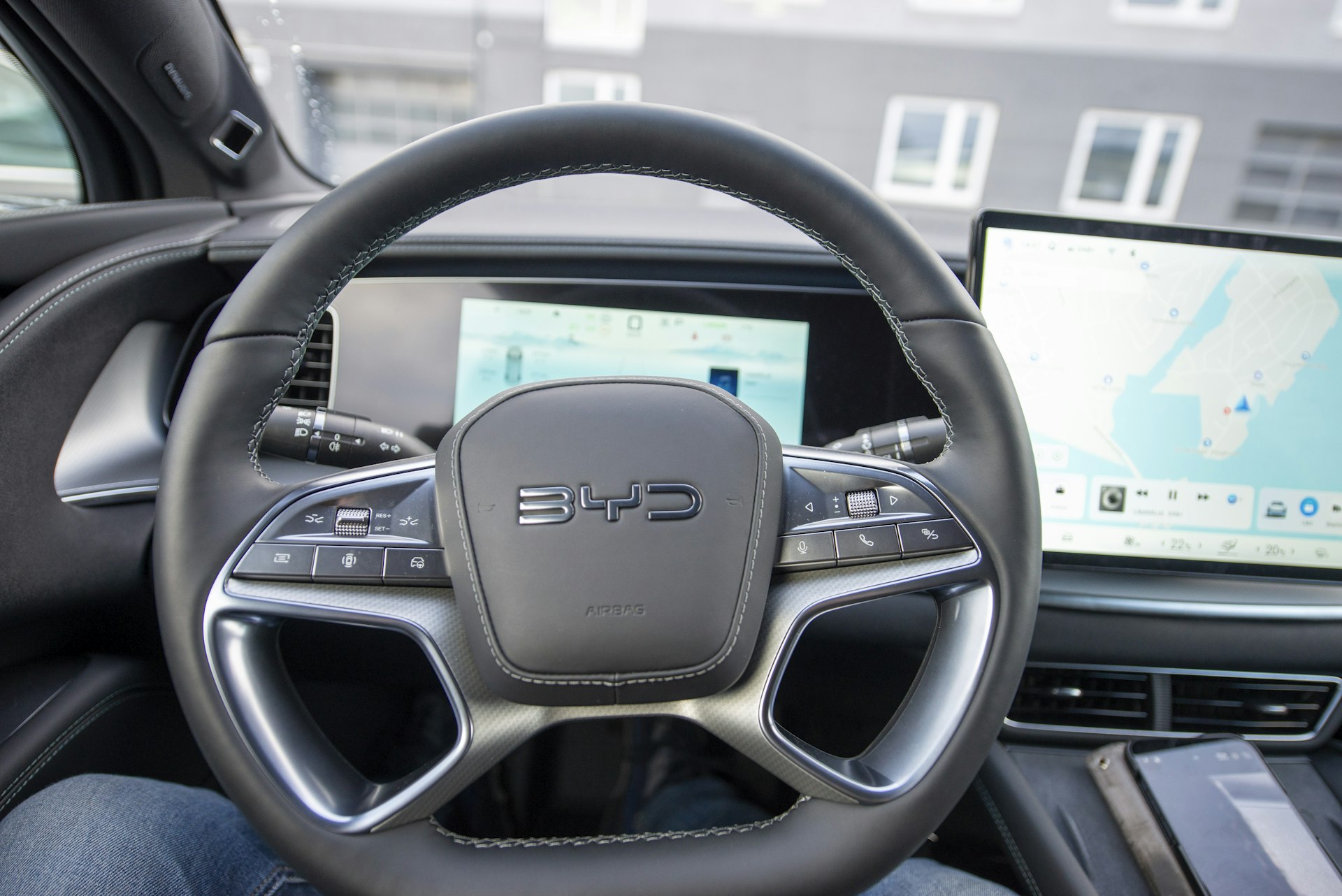Biometric Authentication: Shaping the Future of Vehicle Security and Personalization

Photo by Dragon White Munthe on Unsplash
Introduction
Biometric authentication is rapidly transforming the automotive landscape, promising a future where vehicles are more secure, convenient, and personalized than ever before. With major automakers and technology firms investing heavily in this space, the integration of biometric systems-from fingerprint and facial recognition to heart rate monitoring-has moved from concept cars to production models. This article explores the evolving future of biometric authentication in vehicles, the benefits and challenges of adoption, and practical steps for businesses and consumers to access and implement these innovations.
The Growth Trajectory of Biometric Vehicle Access
The global biometric vehicle access market is poised for robust growth over the next decade. According to industry analysis, the market is valued at nearly $900 million in 2025 and is projected to exceed $3.9 billion by 2035, reflecting a compound annual growth rate (CAGR) of 16% [1] . This expansion will occur in three phases:
- Early Adoption (2025-2028): Premium automakers introduce biometric systems in high-end models. Ford, for instance, has filed patents for in-cabin authentication using facial, fingerprint, and iris recognition. Technology companies are also offering smartphone-based biometric access solutions, moving beyond traditional keys or fobs [1] .
- Acceleration (2029-2032): As hardware costs decrease and integration with infotainment and driver-assistance systems grows, biometric functions will become value-added features for broader market segments.
- Mass Adoption (2033-2035): Biometric access is expected to become standard in mid-tier vehicles, driven by consumer demand for enhanced security and convenience. The most significant annual market jump is forecast for 2035 [1] .
Core Technologies and Future Directions
Biometric authentication in vehicles encompasses several modalities, each with unique strengths and use cases:
- Fingerprint Recognition: Allows for quick, secure vehicle access and ignition. Increasingly integrated into steering wheels or door handles for seamless user experience.
- Facial Recognition: Used for cabin entry and driver authentication. Advances in machine learning are improving accuracy and reducing false positives [2] .
- Iris and Vein Scanning: Offer highly secure, contactless authentication. Particularly suited for hygiene-conscious environments [3] .
- Voice Recognition: Enables hands-free authentication and personalization of infotainment systems. Multi-modal solutions that combine voice, face, and fingerprint data are emerging as the gold standard for vehicle security [2] .
- Health Monitoring: Some advanced systems integrate sensors into steering wheels and seats to monitor heart rate and stress, adapting vehicle settings or activating safety protocols as needed [5] .
Personalization and Adaptive In-Car Experiences
Biometric authentication goes beyond security-it’s also about personalization. Once a driver is authenticated, the vehicle can automatically adjust seating, temperature, lighting, and infotainment options to their preferences. For example, Mercedes-Benz has developed systems that link biometric data to in-car settings, creating a uniquely comfortable environment for each driver [4] . As vehicles become more connected, these adaptive systems may further leverage artificial intelligence to predict and respond to driver needs, such as adjusting driving modes in response to detected stress or fatigue.
Implementation Strategies and Access Guidance
If you are an automaker, technology supplier, or fleet owner interested in integrating biometric authentication, the following practical steps may be helpful:
- Evaluate Your Needs: Identify whether your primary goal is enhanced security, driver personalization, fleet management, or a combination. For fleets, continuous authentication and driver monitoring can add value [5] .
- Select Appropriate Modalities: Consider multi-modal systems for higher security and flexibility. For example, combining facial and fingerprint recognition provides redundancy and user convenience.
- Partner with Reputable Suppliers: Work with established biometric technology providers who can demonstrate compliance with industry standards and have a track record of successful vehicle integrations. Search for providers via major industry trade groups or technology consortia.
- Address Privacy and Compliance: Ensure all biometric data is stored securely and processed according to data protection regulations. Look for guidance from regulatory bodies (such as the National Highway Traffic Safety Administration and regional data privacy authorities). Always inform users about data collection practices and obtain explicit consent.
- Pilot and Test: Begin with a limited rollout in select vehicle models or fleets. Gather user feedback and refine the system before scaling up.
For consumers interested in vehicles with biometric authentication, you can:
- Research new vehicle models from premium brands such as Mercedes-Benz, BMW, and Ford that have announced or implemented biometric features.
- Contact dealerships to inquire about availability, functionality, and privacy policies of biometric systems in specific models.
- Request demonstrations and ask about software update procedures for maintaining security over time.
Benefits of Biometric Authentication in Vehicles
Adopting biometric authentication in vehicles offers several potential advantages:
- Enhanced Security: Biometric data is unique to each user, making unauthorized access significantly more difficult than with traditional keys or PINs [3] .
- Convenience: Contactless and multi-modal systems streamline entry and ignition, reducing reliance on physical tokens.
- Personalization: Vehicles can remember and automatically apply user preferences, enhancing comfort and satisfaction.
- Health and Safety: Real-time monitoring of driver alertness and well-being can prevent accidents and support safer journeys [5] .
Challenges and Solutions
Despite the promise, several challenges must be considered:
- Privacy Concerns: The collection and storage of sensitive biometric data require strict safeguards. Automakers and technology suppliers must implement robust encryption and transparent privacy policies [2] .
- Reliability: Environmental factors such as lighting or weather can impact the accuracy of some biometric modalities. Redundant systems and regular software updates are essential for consistent performance.
- Regulatory Compliance: Biometric deployments must align with evolving data protection laws. Companies should stay updated on regional regulations and seek legal counsel as necessary.
- User Acceptance: Some users may be wary of new technologies. Providing clear information and opt-out options can foster trust.
Alternatives and Emerging Innovations
While biometric authentication is leading the future of vehicle security, alternative approaches and innovations are also under development. These may include secure mobile digital keys, traditional PIN or passcode entry, and advanced behavioral analytics that identify users based on driving habits. As AI advances, hybrid systems that combine multiple authentication methods may offer the best balance of security and user experience [3] .
How to Stay Informed and Take Action
To remain up to date on the latest advancements in biometric authentication for vehicles, consider these steps:
- Monitor press releases from major automakers and leading automotive technology suppliers.
- Attend automotive and security technology trade shows and conferences.
- Consult with certified automotive security professionals for implementation advice.
- Regularly review updates from regulatory agencies such as the National Highway Traffic Safety Administration (NHTSA) and data privacy authorities.
If you wish to access or implement biometric vehicle authentication, you can search for “biometric vehicle access systems” on reputable automotive technology platforms or contact your vehicle manufacturer directly for verified information regarding current and upcoming features.

Photo by GOtomedia SE on Unsplash
References
- [1] IDTechWire (2024). Biometric Vehicle Access Market Forecast to Quadruple by 2035.
- [2] SecurityForceNow (2025). Advancements in Biometric Security: What to Expect in 2025.
- [3] HID Global Blog (2025). What’s on the Horizon: 10 Biometric Trends for 2025.
- [4] PatentPC (2024). Inside Mercedes’ Biometric Authentication Patents for Connected Cars.
- [5] Patsnap Eureka (2025). The Future of Biometric Controls in 454 Big Block Vehicles.
MORE FROM smartsavingsfinder.com













